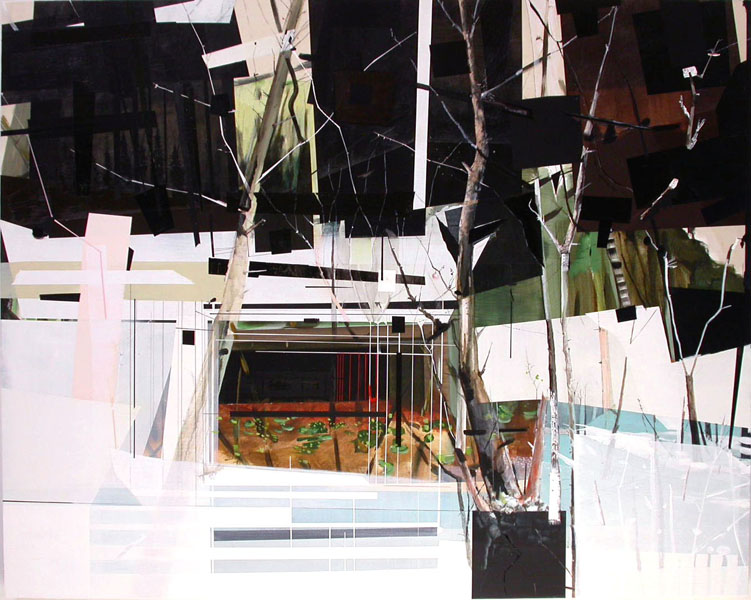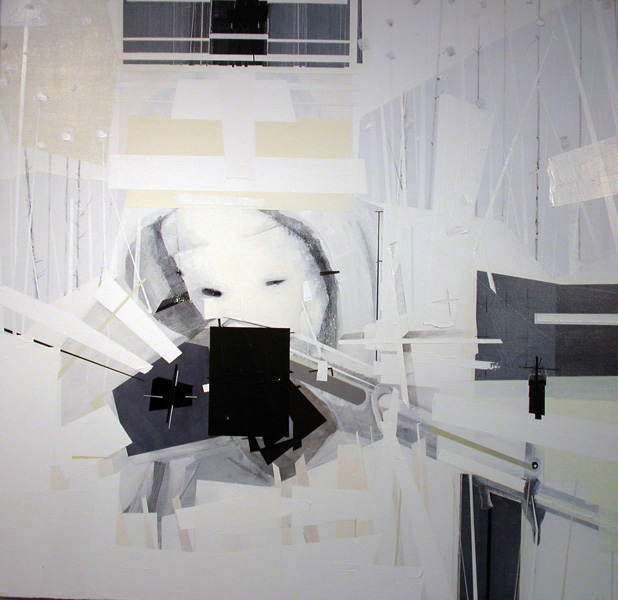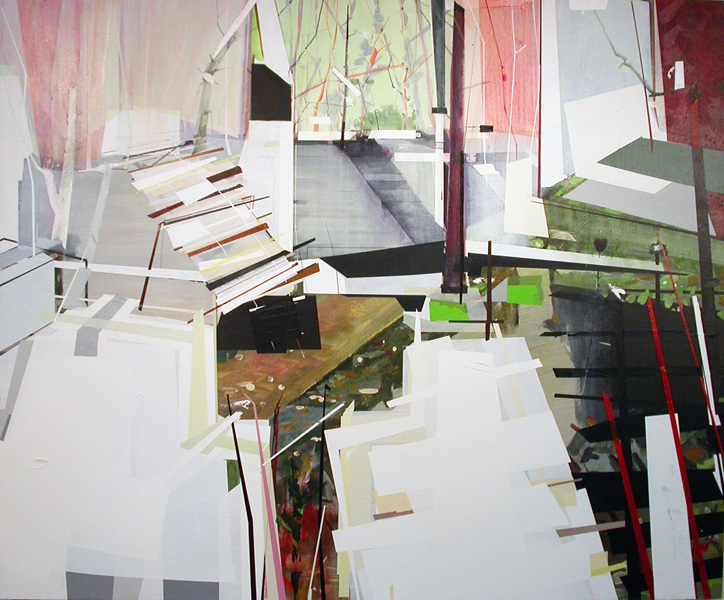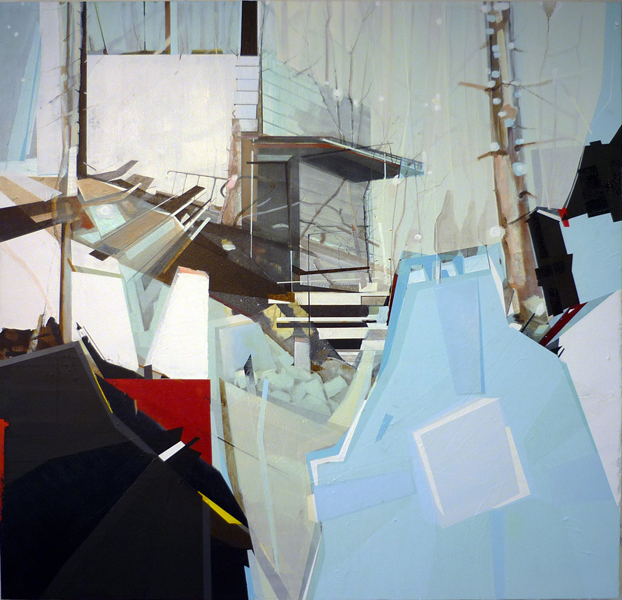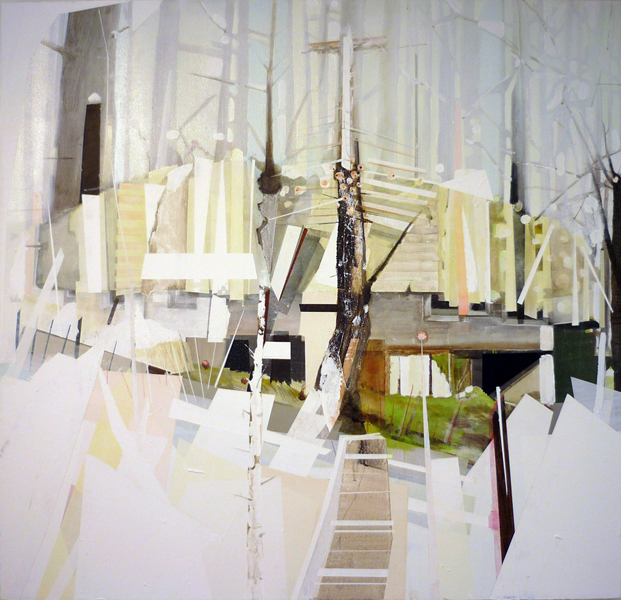Dimitri Kozyrev (Online Gallery)
GALLERY | BIO | SOLO EXHIBITIONS | GROUP EXHIBITIONS | PUBLICATIONS/REVIEWS | ARTIST’S STATEMENT | CRITICAL APPRAISAL
ARTMargins is pleased to present a series of new paintings by Dimitri Kozyrev. Kozyrev is interested in the intersection between actual, physical landscape and mental landscapes, coupled with recent world events, led him to reflect on the ruins of war and its impact on the environment. The series is titled Lost Edge.
Dimitri A. Kozyrev
www.dimitrikozyrev.com
SELECTED SOLO EXHIBITIONS
2009 Lost Edge, Mark Moore Gallery
2006 Gulf Coast Museum of Art, Largo, FL
2005 Cirrus Gallery, Los Angeles, CA
2004 Journeys II, Cirrus Gallery, Los Angeles, CA
2003 Drawings, Cirrus Gallery, Los Angeles, CA
2001 Lost Landscapes, Contemporary Arts Forum, Santa Barbara, CA
SELECTED GROUP EXHIBITIONS
2009 VIII International Bienalle, Museum of Modern Art, Krasnoyarsk, Russia
2009 Gary H. Brown Collection, University Art Museum, UCSB, Santa Barbara, CA
2009 Trouble In Paradise, Tucson Museum of Art, Tucson, AZ
2009 Fast Forward, Channing Peake Gallery, Santa Barbara, CA
2008 Future Tense: reshaping the landscape, Neuberger Museum of Art, Purchase, NY
2008 Ben Maltz Gallery, Otis College, Los Angeles, CA
2008 Claremont Graduate University, Pomona, CA
2007 Ultrasonic International II, Mark Moore Gallery, Los Angeles, CA
2006 F[acts]igures, Artwalkamsterdam, Amsterdam, Netherlands
2005 Incognito, Santa Monica Museum of Art, Santa Monica, CA
2005 Fineline, New Drawings, Cirrus Gallery, Los Angeles, CA
2004 Armory Art Fair, New York, NY
2004 Contemporary Arts Forum, Santa Barbara, CA
2003 Road Show, George Adams Gallery, New York, NY
2003 Abstracted, Limn Gallery, San Francisco, CA
2002 Snapshot, Elizabeth Leach Gallery, Portland, OR
2002 Flat Files Rendez Vous, Post vs. Pierogi Gallery, Post, Los Angeles, CA
2001 Auxiliary Settings, Cirrus Gallery, Los Angeles, CA
PUBLICATIONS/REVIEWS
David Pagel, “The Shapes of Powerlessness,” Los Angeles Times, March 13, 2009
Elizabeth Schwyzer, “Fast Forward 2009,” The Independent, March, 2009
Josef Woodard, “Then and Now,” Santa Barbara News-Press, February13, 2009
Peter Frank, “Looky See” at Otis College, Artweek, October, 2008
Cynthia Valdez, “Looky See:A Summer Show,” THE Magazine-LA, October, 2008
Daniella Walsh, “Taking a Fresh Look at the Land,” The OC Register, October 1, 2006
Tyler Green, “Top 10 of 2005,” www.artsjournal.com, January 2006
Peter Frank, “Picks of the week,” LAWeekly, August 5-11, 2005
Tyler Green, “Around LA,” www.artsjournal.com, June 27, 2005
David Pagel, “Giving Substance to a Virtual World,” Los Angeles Times, May 13, 2005
Tyler Green, “On Miami Scope,” www.artsjournal.com, December, 2004
Tyler Green, “Modern Art Notes,” www.artsjournal.com, March 17, 2004
David Pagel, Los Angeles Times, November, 2003
Terence Hannum, “Raid in Chicago,” www.panel-house.com, November, 2003
Alan G. Artner. “All’s fair at ‘Art Chicago’,” Chicago Tribune, May 10, 2003
Laura Janku Richard, “Abstract-ed,” Artweek, May, 2003
Holly Myers, “Reinventing the Wheels,” Los Angeles Times, February 28, 2003
David Pagel, Los Angeles Times, September, 2002
Joan Crowder, “Faculty on Display,” Santa Barbara News-Press, May 3, 2002
Christopher Miles, “Critic’s picks,” Artforum, February, 2002
David Pagel, “Kozyrev Details the Open Road at Hurtling Speed,” Los Angeles Times, January 19, 2002
Lawrence Gipe, “On the road with Dimitri,” The Independent, May 31, 2001
New American Paintings, MFA, 2000.
ARTIST’S STATEMENT
In my recent work, modernist, constructivist methods of rearranging pictorial space are used to reflect on the scars that wars have left behind, mentally and physically, but also the way that landscape and nature heal these scars and how the events and people who created them become forgotten. I have titled this body of work Lost Edge. I use the word “edge” because I draw a comparison between the notion of the avant-garde in war and the art world. In the early 20th Century, the avant-garde was at the height of its importance in both realms. Now, however, I maintain that just as the concept of the military avant-garde has been “lost,” because of changes in methods of warfare, the avant-garde in the contemporary art world, has also lost its edge.
The source material for this body of work is images of ruins of the once mighty fortifications of the Mannerhiem Line, built to protect Finland from the advances of the Soviet military avant-garde. Finland’s attempt was valiant, by in vain; this war and the lives that were lost in 1939 are largely forgotten. The fortification lie in ruins, and nature is slowly reclaiming them. Similarly, the “cutting edge” of the contemporary art world seems to have become blunted. Viewers of the avant-garde work of many visionary artists of the early 20th Century were shocked, challenged and inspired by The Malevich’s Black Square and The Urinal of Marcel Duchamp. Because of changes in society, like changes in warfare, it has become difficult for today’s contemporary artist to generate the same level of response without resorting to vulgarity.
CRITICAL APPRAISAL
To look at Dimitri Kozyrev’s five new paintings at the Mark Moore Gallery is to feel as if you’re sifting through the rubble of some cataclysm. It’s impossible to know if you’re looking at the blasted aftermath of a terrorist attack or simply staring at the screen of your laptop as its digital info convulses and freezes before crashing completely.This whiplash shift from public tragedies to personal frustrations is Kozyrev’s specialty. His large-format canvases deliver it with aplomb by confusing the boundaries between feelings and facts. They also make paranoia appear to be a pretty sensible response to the newly global world, in which the horror of powerlessness takes ever-changing shape. Each of Kozyrev’s predominantly abstract paintings splinters the picture-plane. Compositional unity is fractured into jagged fragments that provide faceted, often conflicting perspectives of a world without center. Sometimes it seems as if you’re looking into a landscape dotted with barren trees. At others, your view seems to be interrupted by glitches in the transmission. In all of Kozyrev’s conflicted works, solid structures drift into focus only to disintegrate, leaving your desire to stand on terra firma maddeningly unsatisfied. ach part of each painting is handled differently. Sometimes, the delicacy and detail of super-realistic watercolors predominate. At others, the rough-and-ready messiness of mortar-slathered bricks takes over. Everywhere, the jostling planes of Cubism meet the giddy instantaneousness of the Digital Age. ozyrev, currently based in Arizona, was born in 1967 in what used to be the Soviet Union and is now St. Petersburg, Russia. The sense of one system breaking down and another replacing it takes chilling shape in his vertiginous images of profound instability.
— David Pagel, The Los Angeles Times.

